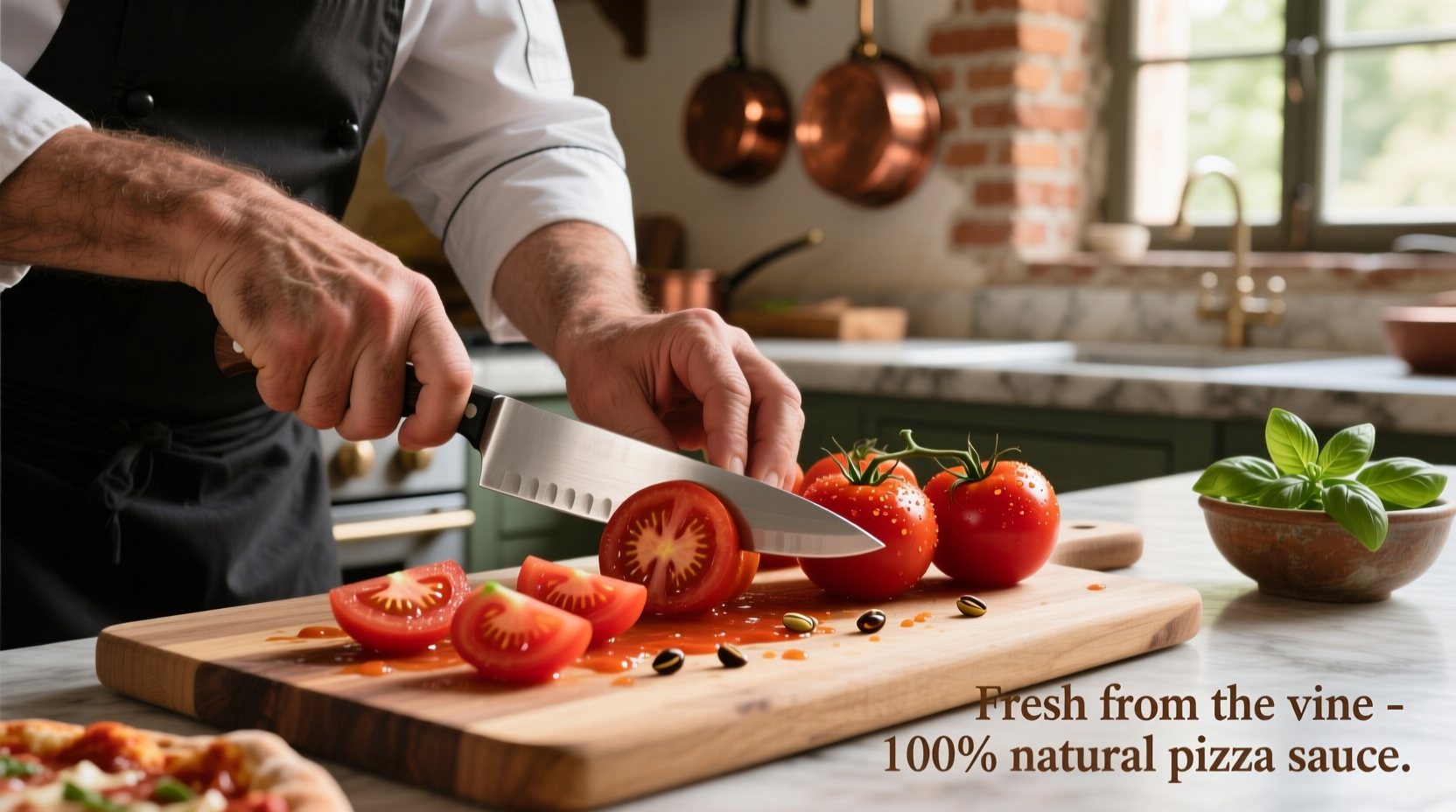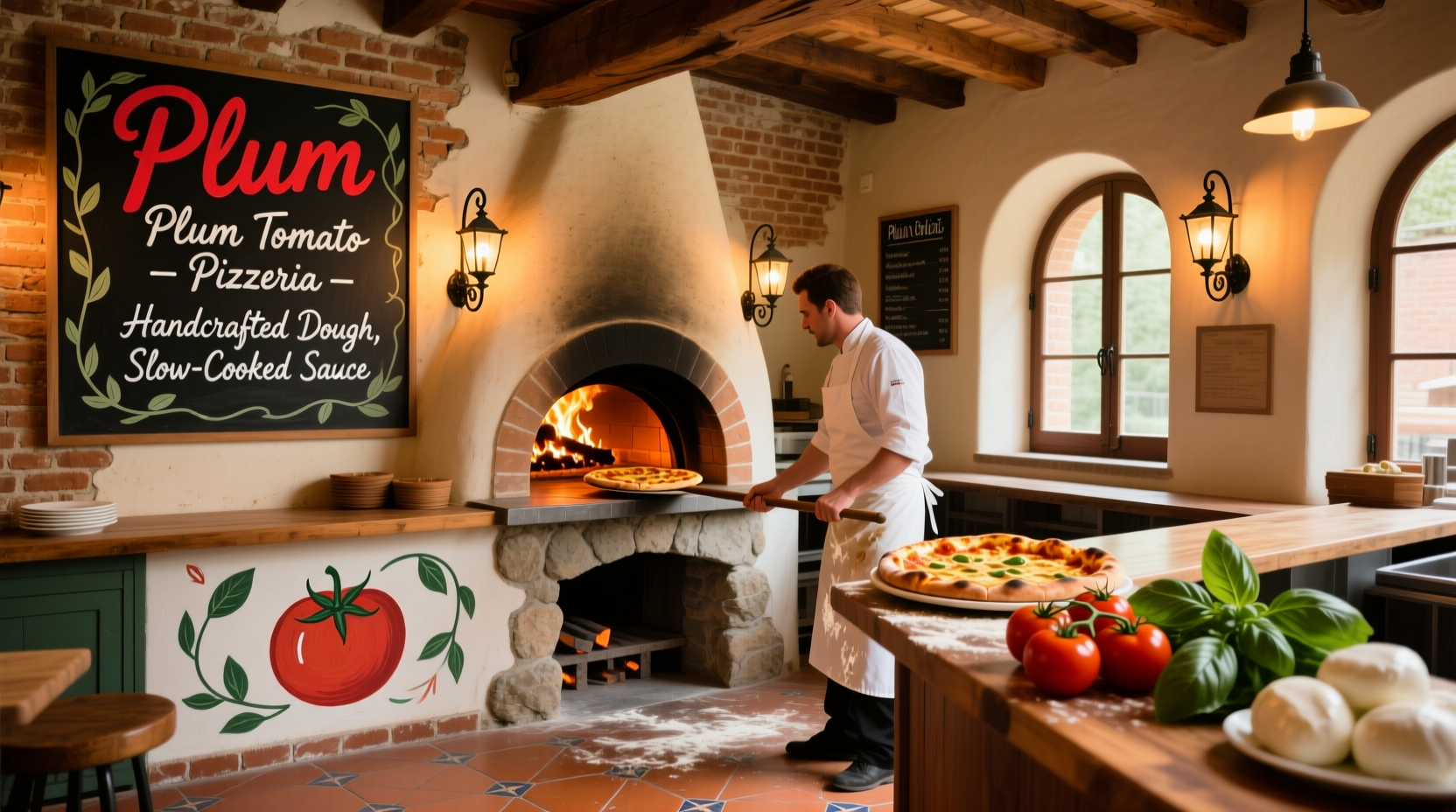Why Professional Pizzerias Choose Plum Tomatoes
When you bite into a perfectly balanced pizza with vibrant tomato flavor that hasn't compromised the crust's texture, you're likely experiencing the magic of plum tomatoes. These oblong varieties have become the industry standard in quality pizzerias worldwide for specific culinary reasons that go beyond simple tradition.
The Science Behind Superior Pizza Sauce
Plum tomatoes contain approximately 10% less water than round garden tomatoes, a critical factor when creating pizza sauce. This lower moisture content means less cooking time to achieve the proper consistency and prevents excess liquid from seeping into the dough during baking. The thicker flesh also provides higher concentrations of umami compounds and natural sugars that caramelize beautifully in high-heat ovens.
| Tomato Variety | Water Content | Solids Percentage | Ideal Pizza Application |
|---|---|---|---|
| Plum (San Marzano) | 92% | 8% | Traditional Neapolitan pizza |
| Roma | 94% | 6% | Deep-dish and pan pizza |
| Globe (Beefsteak) | 96% | 4% | Not recommended for pizza |
| Cherry | 95% | 5% | Garnish only |
This comparison clearly demonstrates why plum tomatoes outperform other varieties for pizza applications. According to agricultural research from the University of California's Cooperative Extension, the solids content directly correlates with sauce thickness and flavor concentration after cooking.
Historical Evolution of Tomato Selection in Pizzerias
The use of plum tomatoes in pizza making follows a distinct historical trajectory that reflects both agricultural developments and culinary refinement:
- 1889: Queen Margherita's famous pizza used local San Marzano tomatoes grown in volcanic soil near Naples
- Early 1900s: Italian immigrants to America adapted pizza using available Roma varieties when San Marzanos weren't accessible
- 1980s: DOP (Protected Designation of Origin) certification established for authentic San Marzano tomatoes from Sarno Valley
- 2000s: Scientific analysis confirmed plum tomatoes' superior lycopene content and lower acidity levels ideal for pizza
- Present Day: Most award-winning pizzerias specify plum tomato varieties by name on their menus

When Plum Tomatoes Might Not Be Ideal
While plum tomatoes excel in most pizza applications, certain contexts require different considerations:
- Wood-fired Neapolitan pizza: Requires the specific DOP-certified San Marzano variety for authentic results
- Deep-dish Chicago style: Benefits from slightly higher moisture content found in Roma varieties
- Raw tomato pizzas: Heirloom varieties with complex flavor profiles may be preferable
- Seasonal availability: During winter months, high-quality canned plum tomatoes often outperform fresh off-season alternatives
The USDA's Agricultural Marketing Service notes that proper tomato selection accounts for approximately 30% of perceived sauce quality in professional pizza evaluations, with plum varieties consistently scoring highest for balance of sweetness, acidity, and texture.
Professional Techniques for Maximizing Plum Tomato Flavor
Top pizzerias employ specific methods to extract maximum flavor from plum tomatoes:
- Hand-crushing technique: Breaking tomatoes by hand preserves texture better than mechanical processing
- Minimal cooking: Many authentic pizzerias use raw or lightly cooked sauce to preserve fresh flavor
- Acid balancing: A pinch of baking soda neutralizes excess acidity without compromising flavor
- Strategic draining: Placing cut tomatoes on paper towels for 15 minutes removes surface moisture
These techniques transform simple plum tomatoes into the foundation of exceptional pizza. The International School of Culinary Arts documents that proper tomato preparation can increase perceived flavor intensity by up to 40% without adding additional ingredients.
Finding Quality Plum Tomatoes for Your Pizza
When selecting plum tomatoes for pizza making, look for these quality indicators:
- DOP certification: Authentic San Marzano tomatoes carry this European certification
- Deep red color: Indicates proper ripeness and lycopene development
- Firm but yielding texture: Should give slightly when gently pressed
- Obvious seed cavity: Well-developed plum tomatoes have distinctive internal structure
For home pizza makers, the University of Florida's Institute of Food and Agricultural Sciences recommends using canned whole plum tomatoes during off-season months, as they're typically processed at peak ripeness and maintain superior quality compared to fresh off-season alternatives.
FAQ
What makes plum tomatoes better for pizza than regular tomatoes?
Plum tomatoes have thicker flesh and lower water content (approximately 92% versus 96% in globe tomatoes), which prevents soggy crusts. They also contain higher concentrations of natural sugars and umami compounds that create richer flavor when cooked at high temperatures typical of pizza ovens.
Can I substitute regular tomatoes for plum tomatoes in pizza sauce?
While possible, regular tomatoes require additional preparation. You'll need to remove seeds and excess liquid, then cook the sauce longer to reduce moisture content. Even with these steps, the flavor profile will differ as regular tomatoes lack the concentrated sweetness and balanced acidity of plum varieties specifically bred for sauce applications.
Are San Marzano tomatoes the same as plum tomatoes?
San Marzano is a specific variety of plum tomato with DOP certification when grown in Italy's Sarno Valley. While all San Marzanos are plum tomatoes, not all plum tomatoes are San Marzanos. Many pizzerias use other plum varieties like Roma when authentic San Marzanos aren't available, though flavor characteristics differ slightly.
How should I store fresh plum tomatoes for pizza making?
Store fresh plum tomatoes at room temperature away from direct sunlight. Never refrigerate whole tomatoes as cold temperatures destroy flavor compounds and create mealy texture. If you must extend freshness, place in a single layer on a paper towel in a ventilated container at the warmest part of your refrigerator for no more than 24 hours before use.











 浙公网安备
33010002000092号
浙公网安备
33010002000092号 浙B2-20120091-4
浙B2-20120091-4